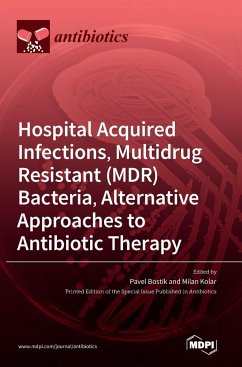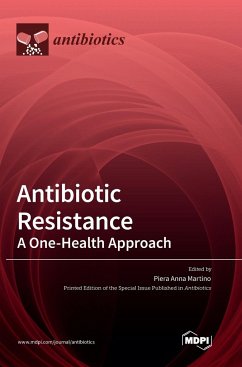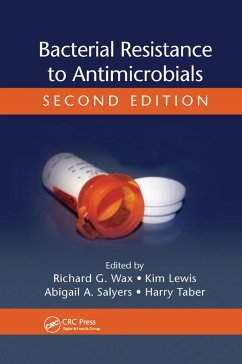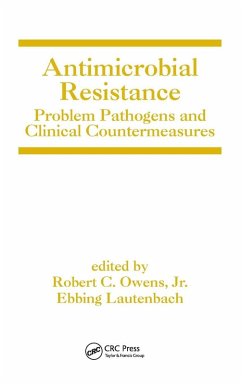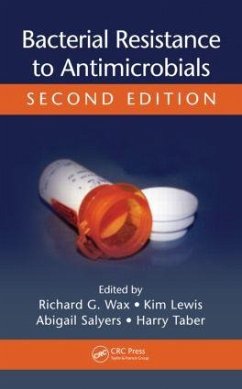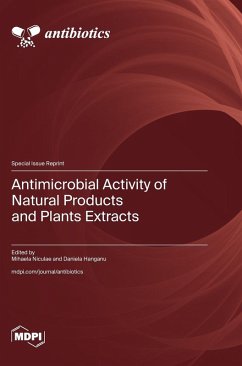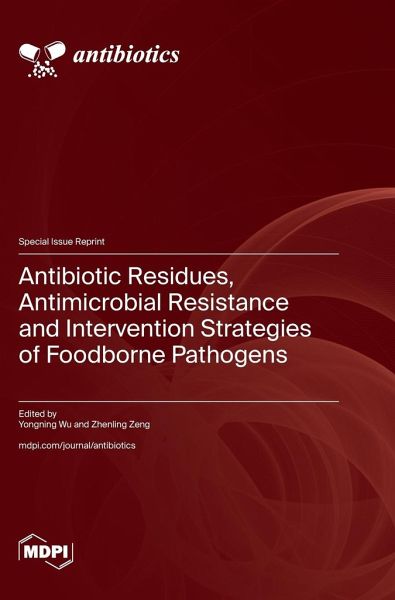
Antibiotic Residues, Antimicrobial Resistance and Intervention Strategies of Foodborne Pathogens
Versandkostenfrei!
Versandfertig in 1-2 Wochen
73,99 €
inkl. MwSt.

PAYBACK Punkte
37 °P sammeln!
Food products are becoming increasingly affected by the use of antibiotics, as the transfer of residual veterinary drugs, antibiotic-resistant bacteria (ARB), and antimicrobial resistance (AMR) and its genes (ARGs) occurs through unexplained mechanisms, representing a public health threat. As part of the framework proposed by One Health, it is essential to include information on animal and food chain pathogens in AMR surveillance programs, since human and animal health are interconnected. Therefore, this Special Issue will pay specific attention to human, animal, plant, food, and environment i...
Food products are becoming increasingly affected by the use of antibiotics, as the transfer of residual veterinary drugs, antibiotic-resistant bacteria (ARB), and antimicrobial resistance (AMR) and its genes (ARGs) occurs through unexplained mechanisms, representing a public health threat. As part of the framework proposed by One Health, it is essential to include information on animal and food chain pathogens in AMR surveillance programs, since human and animal health are interconnected. Therefore, this Special Issue will pay specific attention to human, animal, plant, food, and environment interfaces, and will try to explore intervention strategies against foodborne pathogens. Furthermore, it will characterize the variation in the composition of a healthy human gut microbiome in correlation with antibiotic usage and yoghurt consumption. The Special Issue focus on intervention strategies and food safety in light of antibiotic usage in animal and plants, and discuss ARB and ARG in further detail.






